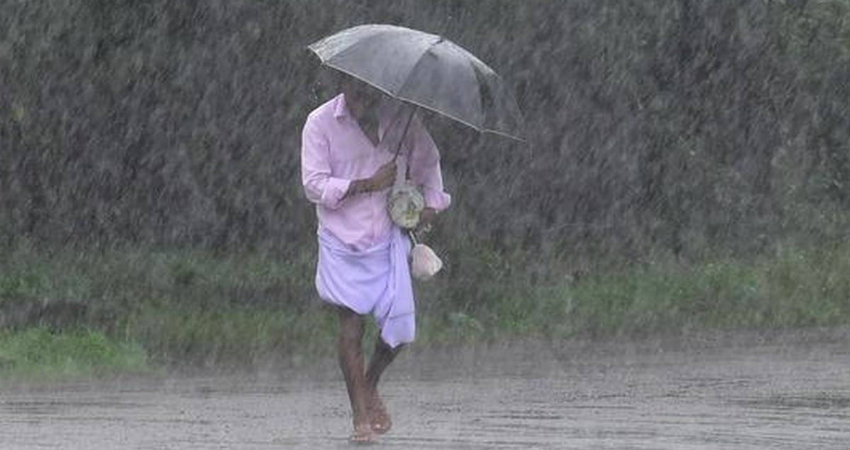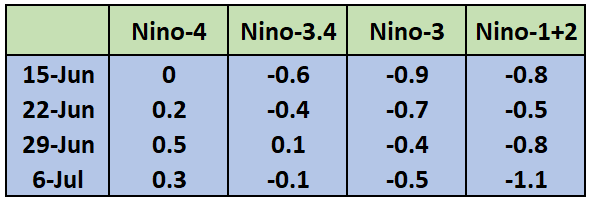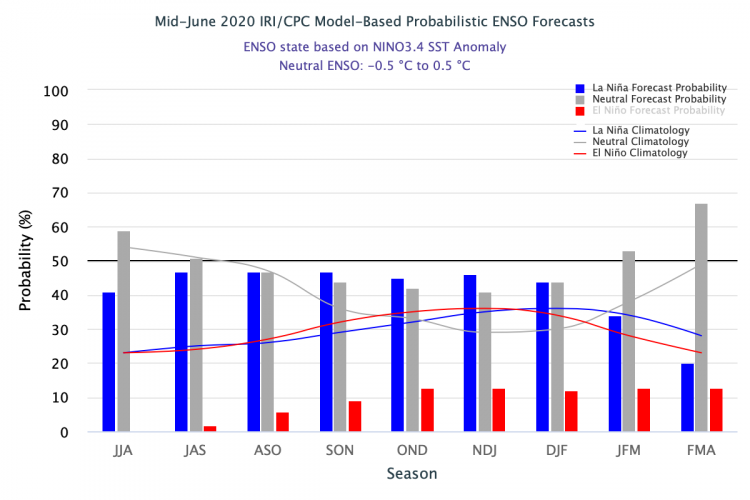
Nino indices are quite stable in the Equatorial Pacific Ocean and the vibrations in the respective four regions are not at all alarming. The Pacific warming always holds Indian Monsoon to a ransom and spoil the seasonal rains. Beginning in mid-September 2019, above average Sea Surface Temperature (SST’s) expanded from the Dateline into the Eastern Pacific Ocean. Since early May 2020, equatorial SST’s are now near to below average in the east-central and eastern Pacific Ocean.
Historically speaking, El Nino and La Nina events tend to develop during the period of Apr-June and reach their maximum strength during Oct-Feb. Typically these episodes last for 9-12 months, though occasionally persist even for double of this duration. El Nino in general has a periodicity of occurrence once in 2-7 years. In 40% of the cases, El Nino events are followed by La Nina episodes which otherwise does not have any preferred cycle of occurrence.
There are hardly any years where the evolution of either of these events finds similarity. But there are occasions of sudden amplification or flattening of both these conspicuous phenomena. However, these precarious occurrences do not find any connection with other global factors. They also continue to be mysterious about their cause of growth and decay as well.
In the last four weeks, all the four Nino indices have remained neutral and mostly on the lower side of threshold zero. There are further indications of cooling of the Pacific, particularly the region which matters the most for monsoon rains.

The probability of El Nino is negligible during the monsoon months and gradual rise towards the fall of the year. The share of Neutral and La Nina is equitably divided through the season and La Nina declines only at the beginning of next year.

From the El Nino point of view, Monsoon 2020 looks to be in safe hands. However, the role of two other oceanic indices: IOD (Indian Ocean Dipole) and MJO (Madden Julian Oscillation) also need to be tracked. In tandem, approach has always been a boon for seasonal rains and diversions if any slows down the process.


